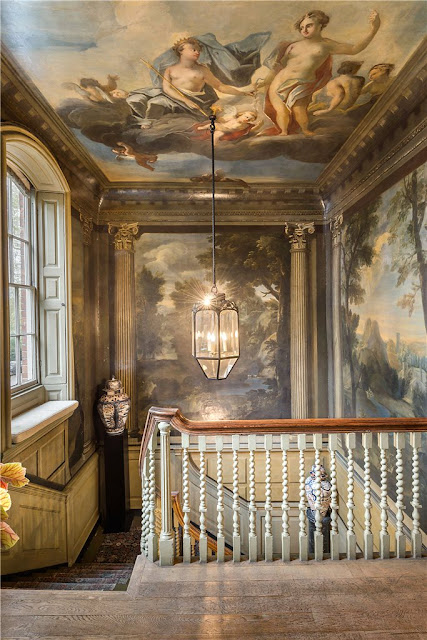Thank you to the
Scully & Scully catalogue for reminding me that the world hasn't completely gone to hell in hand basket. Its numerous pages filled with photos of folding bridge tables, hardboard place mats, wooden breakfast bed trays (similar to the one above), and other traditional niceties always bring me comfort, for they make me realize that some people in this world continue to appreciate such things.
Speaking of breakfast bed trays, there was a time when the morning meal often required its own set of dining accoutrements, including china and linen made especially for use on a breakfast tray or a small breakfast table. If you read any of the 1930s and 1940s-era design magazines, you'll find numerous articles written for the bride, advising her of the household inventory she would need to run her home efficiently and entertain properly. Along with luncheon china and luncheon linen, dinner china and dinner linen, and tea sets and tea linen, breakfast china, referred to as "luxuries" in a 1936
House & Garden article, was often recommended for one's "breakfast repertory". Needless to say, brides were encouraged to own a lot of china and linen. (Don't even get me started on the recommendations for bed and bath linen. The lists for these were endless!)
Although not a bride, I, too, have breakfast china (Porthault's
Trèfles pattern), a large breakfast tray, and a set of breakfast tray linen, which consists of one mat and two napkins. I wish that I could say I use these daily, but instead, it's more like a Sunday occurrence. If only my life were leisurely- and if I had staff- then perhaps my weekday breakfast repertory would be far more luxurious than it currently is.
Singer and actress Julie London, photographed in bed with her breakfast tray by Slim Aarons.
Truman Capote's Porthault
breakfast set, sold at Bonhams in 2006.
Mario Buatta created this dining-in-bed vignette for Tiffany.
Wooden breakfast bed tray from
Scully & Scully
Another Slim Aarons' breakfast-in-bed photo, this one of Mrs. Saunderson of Montecito.
Brooke Astor's breakfast china by Hammersley & Co., sold at
Sotheby's in 2012.
Vintage Madeira pink breakfast set from
D'Anjou Linens
An elegant bed vignette, courtesy of Tiffany & Co.
A 1940 Léron linen ad, which shows their charming "Bouquet" table linen. The linen was available in luncheon sets, tea sets, and breakfast sets.



















































